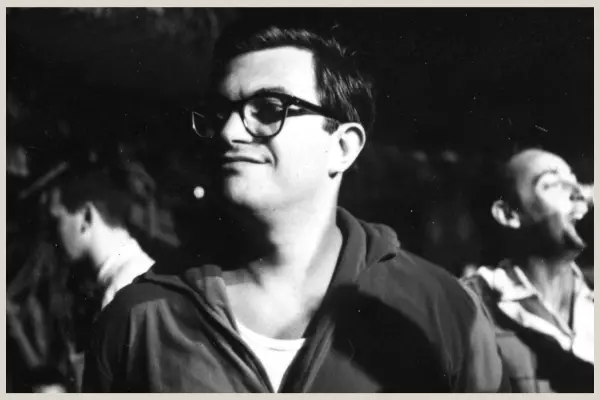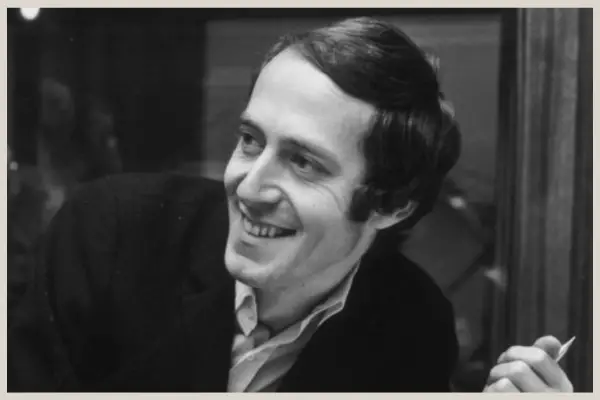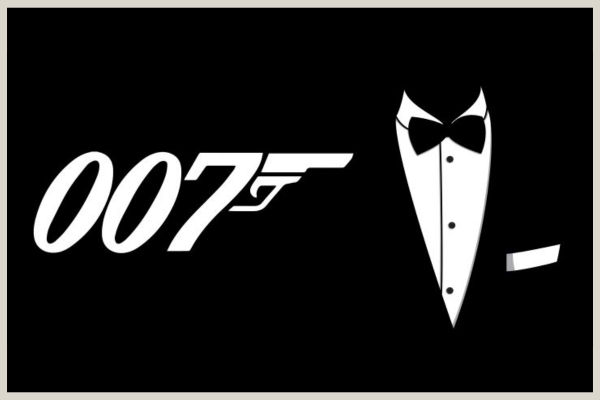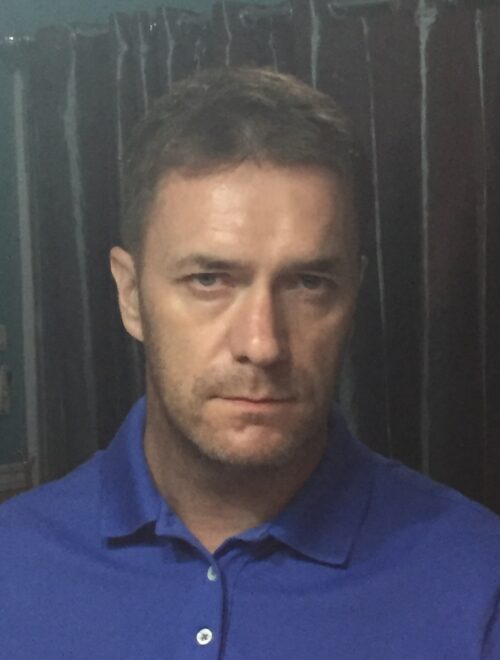The Iconic James Bond Theme by Monty Norman and John Barry
The James Bond franchise is more than just a cinematic sensation – it’s an indelible part of global pop culture. Originating from Ian Fleming’s spy novels, the world was first introduced to the charismatic secret agent, James Bond in the 1953 book Casino Royale.
And after Bond first went to the silver screen and Dr. No was released in 1962, it marked the start of what would become the most successful film franchise in history. Over six decades and twenty-five films later, James Bond continues to captivate audiences worldwide with its thrilling action, exotic locales, and suave demeanor of the main character.
But there’s another element that’s just as synonymous with James Bond as his martini – “shaken, not stirred” – and that is the James Bond theme. Composed by Monty Norman and orchestrated by John Barry, the iconic theme has become ingrained in the very fabric of the franchise.
Recognizable from the first few notes, the James Bond theme song sets the tone for the daring adventures that follow, and its distinctive, suspenseful surf rock riff immediately signals the presence of cinema’s most famous spy.
This original theme song isn’t just a piece of background music. It’s played a crucial role in defining the identity of James Bond and has become one of the most famous pieces of film music in history. In this article, we will explore the significance of the original James Bond theme song, its creation and its part it has played in the six decades and 25 Bond movies.
Listen to the original James Bond Theme from 1962
Origin of the James Bond Theme Song
At the heart of the original James Bond theme song are two musical maestros: Monty Norman and John Barry. Monty Norman, a British singer and composer, enjoyed a long and illustrious career in music. With his background in musical theatre and popular music, Norman was chosen to compose the soundtrack for Dr. No. In his efforts, he created the distinctive melody that would eventually be known as the James Bond theme.
John Barry, on the other hand, was a composer, conductor, and arranger known for his work on film music. Barry had his origins in jazz and pop music, being the leader of the John Barry Seven, a popular band in the 1950s and ’60s. He was brought into the project to arrange the Bond theme and ultimately lent his talents to 11 of the Bond films, contributing much to the signature sound of the franchise.
The Story Behind the Composition of the James Bond Theme
The story behind the creation of the original James Bond theme song is as fascinating as the spy it represents. When Monty Norman was initially hired, he composed several musical pieces for the film, but it was a specific melody from a shelved musical of his, titled Bad Sign, Good Sign, that captured the essence of the character.
John Barry, along with his orchestra, was brought in to give this theme the final touch. Barry’s arrangement added depth and dynamism, incorporating the surf rock style that was popular at the time. He used a distinctive guitar riff, played by session musician Vic Flick on an electric guitar with a high-treble setting, which gave the theme a sense of urgency and intrigue that complemented Bond’s high-stakes world of international espionage.
Thus, through the combined efforts of Monty Norman and John Barry & Orchestra, the James Bond theme was born – a theme that made it into the UK Top Ten in 1962, and one that would go on to become synonymous with the world’s most famous secret agent.

The Iconic James Bond Theme
The James Bond theme is instantly recognizable worldwide, immediately evoking images of intrigue, suspense, and sophistication that align seamlessly with 007’s persona. Composed by Monty Norman and orchestrated by John Barry, the theme, characterized by its robust brass section and a distinctive four-note motif, opens most Bond films and sets the tone for the adventure that awaits.
The theme comprises several musical elements that mirror Bond’s personality – it is bold, confident, and enigmatic. Its opening guitar riff, played on a hollow-bodied electric guitar, provides a surf rock feel, a popular genre in the 1960s, giving the theme an edgy yet stylish appeal.
One of the theme’s most defining elements is its use of a minor chord progression, creating a sense of suspense and danger. Its fast tempo and the driving rhythm established by the percussion section are other key elements that contribute to the theme’s sense of urgency, capturing Bond’s world.
The theme’s evolution over the years – while maintaining its core elements – mirrors Bond’s adaptability, ensuring that both the character and the music remain relevant and engaging across different eras and audiences.
As new elements are introduced or as different interpretations of the theme are presented, they align with changes in the character’s portrayal or the tone of the films, further cementing the bond between the theme and the identity of James Bond.

Read: James Bond Movies Theme Songs
The James Bond Theme Evolution
The Connery and Lazenby Movies
The inaugural manifestation of the James Bond Theme was in Dr. No, where it was featured as part of the iconic gun barrel and primary title sequence. In the follow-up film, From Russia with Love, the theme made appearances in the pre-title gun barrel sequence, within the main title theme, and in the track named James Bond with Bongos. This version had a slower, jazz-infused, and slightly more impactful arrangement than the initial orchestration.
Goldfinger used the James Bond Theme in the track Bond Back in Action Again. The theme for this movie notably carries heavy influences from the bold, jazz-laden theme song rendered by Shirley Bassey.
Thunderball showcased a complete orchestral rendition of the theme in the track Chateau Flight. An additional full orchestral version was originally intended for the film’s ending titles.
You Only Live Twice displayed a somber orchestration of the theme with Bond’s “funeral” sequence in Hong Kong harbor. A complete orchestral version was utilized in the Little Nellie autogyro combat scene.
To round the swinging sixties up with the only George Lazenby Bond movie, On Her Majesty’s Secret Service, the James Bond theme utilized a high-pitched arrangement with the melody executed on a Moog synthesizer.
This track is named This Never Happened to the Other Feller and a similar recording was employed over the end credits of the film. The film ends on the most somber of notes, and the energetic eruption of the James Bond Theme at the very end after Tracy has been murdered implies that Bond will make a return, regardless of the predicament he finds himself in.
For Sean Connery‘s return in Diamonds Are Forever, we saw the return of the guitar alongside a full orchestral rendition during a hovercraft sequence. This track on the official soundtrack is known as Mr. Wint and Mr. Kidd/Bond to Holland.
James Bond Theme Moore and Dalton Movies
With Roger Moore taking over the throne in 1973, the James Bond Theme morphed into a piece primarily driven by a string orchestra. In Live and Let Die, the theme was presented in a Funk-styled version, mirroring the popular Blaxploitation films of that era.
Listen to the Live and Let Die Funky Version
A brief excerpt of the theme was featured in the pre-credits music of The Spy Who Loved Me, dubbed Bond 77, exhibiting a disco sound that was in vogue at the time. The Spy Who Loved Me revisited the surf-rock guitar associated with the early versions of the theme.
A unique instance arose in Octopussy when Bond’s contact, Vijay, in the disguise of a snake charmer, plays several notes of the theme for Bond when he arrives in India, ostensibly as a pre-arranged identification signal.
Timothy Dalton‘s inaugural Bond film, The Living Daylights, the last Bond film scored by Barry, employed a symphonic version with the melody played on strings. This iteration of the Bond theme is particularly significant for introducing sequenced electronic rhythm tracks mixed with the orchestra – a relatively novel innovation at the time, and one that fit in with the narrative of cellist/Bond girl, Kara Milovy.
In Licence to Kill, the James Bond theme was arranged by Michael Kamen, employing rock drums to reflect a more hardened and brutal Bond character. This gun barrel sequence is the first one since Dr. No not to use the Bond theme at the beginning, starting instead with orchestral hits.
The Bond Theme in Pierce Brosnan Movies
In Pierce Brosnan‘s first outing in the 1995 movie, GoldenEye, the gun barrel opens with a synthesized arrangement by Éric Serra, where the signature guitar riff is played on nearly indistinct kettle drums. However, a more conventional version by John Altman is heard during the tank chase scene in St. Petersburg.
David Arnold’s gun barrel arrangements in Tomorrow Never Dies and The World Is Not Enough omitted the guitar melody, moving directly from the theme’s start to its final bars. An electronic rhythm was introduced to the gun barrel sequence in The World Is Not Enough. And the classic Bond guitar line can be heard during some action scenes.
The Die Another Day gun barrel sequence harks back to the 1963 version of From Russia with Love, albeit with a more techno-influenced rhythm. It also includes the guitar riff from the James Bond Theme.

James Bond Theme Song in the Daniel Craig Reboots
In the rebooted version of Daniel Craig era, we don’t hear the James Bond Theme until the very end of his first movie Casino Royale. Throughout the movie, the notes from the song You Know My Name are substituted for the James Bond Theme. Then at the very end, a version of the theme song, entitled “The Name’s Bond…James Bond”, is heard during the end credits, signifying the beginning of a new and modern, 21st-century James Bond.
In Quantum of Solace, the theme accompanies Craig’s new official gun barrel sequence, unusually displayed at the end of the film. This theme bears great similarity to the traditional style in Casino Royale.
In Skyfall, the theme forms part of the harmony to Adele’s vocals and is utilized as the chord progression, inclusive of a faint surf guitar riff. Much like Quantum of Solace, the gun barrel sequence appears at the end of the film, accompanied by David Arnold’s Casino Royale track The Name’s Bond…James Bond.
In Spectre, the theme is featured in the opening gun barrel sequence, symbolizing a return to the classic Bond era from 1962 to 2002.
In No Time to Die, the theme is used in the tracks Gun Barrel and Back to MI6. A reimagined, salsa-like version is featured in Cuba Chase. The film’s title track performed by Billie Eilish includes a trumpet solo that includes the theme.
More Than Just a Theme
The James Bond theme song, composed by Monty Norman and arranged by John Barry, has undoubtedly left an indelible mark on the landscape of film music and beyond. Its iconic surf rock-infused guitar riff, haunting four-note motif, and thrilling brass sections is more than just a theme tune. It defines the tone and atmosphere of the entire franchise.
It’s a piece of music that has grown and evolved with the series, mirroring the shifting portrayals of Bond and the changing eras in which the films have been set. It serves as an essential character, just as integral to the identity of James Bond as the agent’s tuxedos, gadget-filled cars, and signature martinis.
The enduring popularity of the theme attests to its power and influence, showing how a compelling musical motif can define a character and a series. From its inception in the 1960s to its modern iterations, the James Bond theme song remains a testament to the powerful symbiosis of music and storytelling in cinema.





